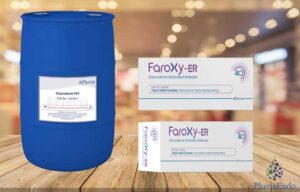Oxycodone 30 is a potent opioid analgesic that commonly affects the management of moderate to severe pain. With its efficacy in providing relief for various types of pain, including acute and chronic conditions, a 30 mg dose of Oxycodone plays a crucial role in pain management strategies worldwide. However, its potency and potential for abuse require careful consideration and monitoring to ensure safe and effective use. This article provides an overview of Oxycodone 30, including its pharmacology, indications, dosing, adverse effects, and considerations for clinical practice. By understanding the role of Oxy 30 in pain management, healthcare providers can make informed decisions. It also can optimize patient care while balancing the need for pain relief with the risks associated with opioid therapy.
Pharmacology of Oxycodone 30
Oxycodone 30 is a semi-synthetic opioid analgesic derived from thebaine, a compound found in the opium poppy. It acts primarily as an agonist at mu-opioid receptors in the central nervous system. In addition, It exerts its analgesic effects by inhibiting the transmission of pain signals and modulating pain perception. Furthermore, Oxycodone 30 has an affinity for kappa and delta opioid receptors. However, its analgesic potency is predominantly effective on mu receptor activation.
The pharmacokinetics of PuviaEndo‘s Oxycodone 30 are characterized by rapid and extensive absorption following oral administration, with peak plasma concentrations reached within 1-2 hours. The drug undergoes hepatic metabolism primarily via cytochrome P450 enzymes, particularly CYP3A4, to form active metabolites such as oxymorphone. These metabolites contribute to the overall analgesic effect of Oxycodone. However, the parent compound remains the primary contributor to its pharmacological activity.
Indications for Use
Oxycodone 30 is for the management of moderate to severe pain that is unresponsive to non-opioid analgesics. It is commonly effective for acute pain following surgery, trauma, or medical procedures. As well as for chronic pain conditions such as cancer-related pain and severe osteoarthritis. Additionally, Oxy 30 may be used as part of multimodal analgesia regimens to optimize pain control while minimizing opioid-related adverse effects.
Dosing Considerations of Oxycodone 30
The dosing of Oxycodone 30 should be individualized based on the patient’s pain intensity, response to previous analgesic therapy, and risk factors for opioid-related adverse effects. The usual starting dose for opioid-naive patients is 5-15 mg every 4-6 hours as needed for pain, with subsequent titration based on efficacy and tolerability. In patients with chronic pain who require long-term opioid therapy, extended-release formulations of Oxy 30 may provide continuous analgesia with less frequent dosing.
Adverse Effects and Monitoring
Despite its efficacy in pain management, Oxycodone 30 is associated with a range of adverse effects that require monitoring and management to ensure safe use. Common adverse effects include nausea, constipation, sedation, dizziness, and respiratory depression. These effects are dose-dependent and often transient, but they can significantly impact patient adherence to therapy. Additionally, Oxy 30 carries a risk of tolerance, physical dependence, and addiction.
Conclusion
In conclusion, Oxy 30 plays a vital role in pain management for patients with moderate to severe pain. Its potent analgesic effects make it a valuable option for providing relief in acute and chronic pain settings. However, its use requires careful consideration and monitoring due to the potential for adverse effects and abuse. Healthcare providers must weigh the benefits of pain relief against the risks associated with opioid therapy, taking into account individual patient factors and preferences. By understanding the pharmacology, indications, dosing, and monitoring considerations for Oxycodone 30, clinicians can optimize its use and contribute to effective pain management while minimizing the risks associated with opioid therapy.









